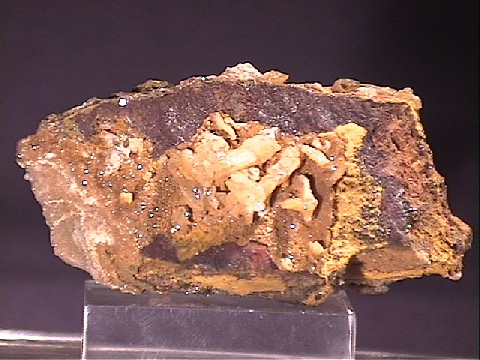 THE MINERAL TARBUTTITE
THE MINERAL TARBUTTITE
- Chemistry: Zn2(PO4)(OH), Zinc Phosphate Hydroxide.
- Class: Phosphates
- Uses: only as a mineral specimen.
Specimens
Tarbuttite is a somewhat rare phosphate mineral but is popular among collectors of rare minerals, especially rare phosphates. It forms good crystals and has a nice luster. Occasionally, the colors can be rather attractive although they are commonly pale. It is usually associated with the colorful limonite, an iron oxide, and the combination can make for a nice cabinet specimen.
Tarbuttite is named after Percy Coventry Tarbutt, a Director of the Broken Hill Exploration Company who collected specimens at the type locality of Broken Hill, Zambia.
PHYSICAL CHARACTERISTICS:
- Color is colorless and pale white, red, green, yellow or brown.
- Luster is vitreous.
- Transparency crystals are transparent to translucent.
- Crystal System is triclinic, bar 1
- Crystal Habits include deeply striated prismatic crystals or crusts.
- Cleavage is perfect in one direction.
- Hardness is 3.5 - 3.7
- Specific Gravity is approximately 4.2 (heavy for translucent minerals)
- Streak is white.
- Associated Minerals are limonite, smithsonite and some other oxidized zinc ore deposit minerals.
- Notable Occurrences include Broken Hill (now Kabwe), Shaba, Zambia and elsewhere.
- Best Field Indicators are crystal habit, locality, associations with other zinc ores and/or phosphate minerals and density.
















